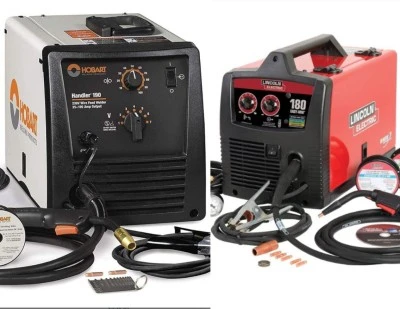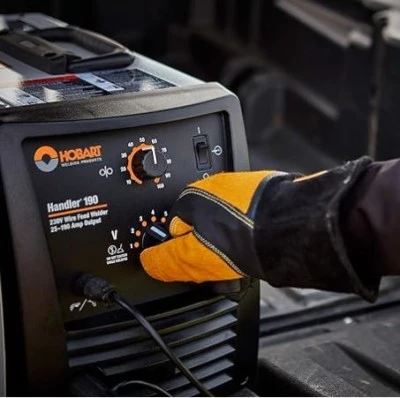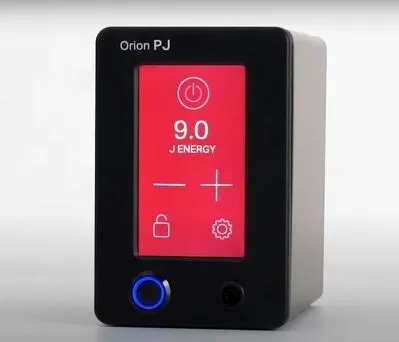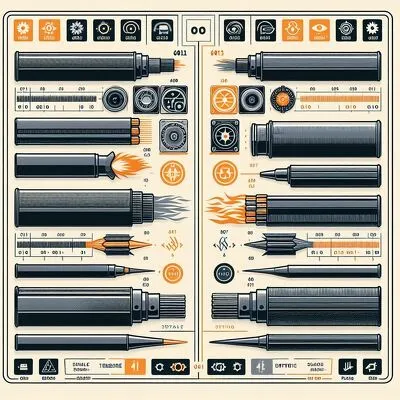Choosing the Right Welder: In-Depth Analysis of Millermatic 141 vs 211
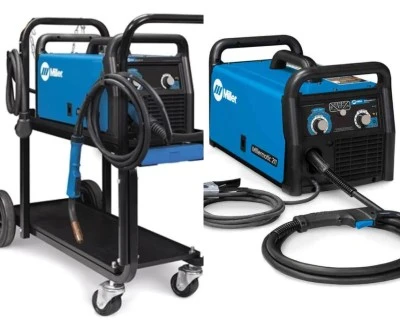
Welding enthusiasts and professionals often face the challenge of selecting the right equipment for their needs. This choice becomes particularly significant when comparing popular models like the Millermatic 141 and 211. Each welder offers distinct features and capabilities, catering to various requirements and skill levels. Understanding the differences in performance, versatility, and technological advancements between these models is crucial for making an informed decision.
I. Introduction
A. Overview of the Millermatic 141 and 211 models
Welding, an art and a science requires the right tools to achieve precision and efficiency. Among these tools, the Millermatic 141 and 211 models stand out in the welding community. The Millermatic 141, known for its ease of use and suitability for home projects, offers a user-friendly experience with solid performance. On the other hand, the Millermatic 211, a versatile and powerful machine, is designed to cater to both amateurs and professionals alike. Its dual voltage capability and advanced features make it a popular choice for a range of welding tasks.
B. Importance of choosing the right welder
Selecting the right welder is pivotal to the success of any welding project. The choice between the Millermatic 141 and 211 models hinges on various factors, including the nature of the project, the user’s skill level, and the desired outcome. A well-chosen welder not only ensures the quality and durability of the welds but also enhances the user’s safety and comfort during the process.
II. Technical Specifications and Performance
A. Millermatic 141
- Power and Duty Cycle
The Millermatic 141 operates with a power range of 30A to 140A, offering a duty cycle of 20% at 90A. This implies that for every 2 minutes of welding, an 8-minute cooldown is required. Equipped with thermal overload protection, this welder ensures safety and longevity. - Usability Features
Featuring an auto-set control, the Millermatic 141 simplifies the welding process, especially for beginners. Users can select material thickness and wire diameter, and the welder adjusts the settings accordingly. It also boasts of a Quick Select drive roll for easy wire feeding and compatibility with a 15ft MIG gun. - Welding Capabilities and Limitations
The Millermatic 141 can weld materials from 24 gauge to 3/16 inch steel and 14 gauge to 18 gauge aluminum, making it suitable for light to medium fabrication tasks. However, its capacity is limited when dealing with thicker materials.
B. Millermatic 211
- Dual Voltage and Duty Cycle
The Millermatic 211 stands out with its dual voltage capability, functioning on both 120V and 240V inputs. This feature enhances its versatility, allowing it to be used in various environments. Its duty cycle is 40% at 150A on 240V and 20% at 115A on 120V. - Advanced Features and Usability
Equipped with Advanced Auto-Set, the Millermatic 211 allows users to choose wire diameter, process type, and metal thickness, and it automatically adjusts settings for optimal welding. It also includes a user-friendly interface and an auto-spool gun detection feature. - Power and Welding Range
With a welding amperage range of 30-230 A, the Millermatic 211 is capable of handling a wider range of materials and thicknesses, from 24 gauge to 3/8 inch steel and aluminum. This makes it suitable for both light and heavy-duty welding tasks.
III. Design and Portability
A. Physical Dimensions and Weight
The Millermatic 141, with its compact design, is ideal for small spaces and easy transportation. It is relatively lightweight, enhancing its portability. The Millermatic 211, though slightly larger, remains portable and is designed with user convenience in mind.
B. Ease of Use in Different Environments
Both models boast features that facilitate ease of use in various environments. The Millermatic 141’s 120V compatibility makes it ideal for home use, while the Millermatic 211’s dual voltage capability allows it to adapt to different settings, including outdoor and industrial environments.
IV. Pricing and Value for Money
A. Cost Comparison
When comparing the cost, the Millermatic 141 is generally more affordable, making it an attractive option for hobbyists or those with lighter welding needs. The Millermatic 211, with its advanced features and greater versatility, comes at a higher price point, justifying its capabilities and range.
B. Warranty and Support
Both models come with Miller’s True Blue warranty, offering comprehensive coverage that underscores the manufacturer’s confidence in their products. This warranty covers parts and labor for specific periods, ensuring long-term value for the investment.
V. Pros and Cons
A. Advantages of Each Model
The Millermatic 141 is celebrated for its user-friendliness, compactness, and suitability for beginners. It’s ideal for small-scale projects and offers a straightforward setup. The Millermatic 211, on the other hand, is lauded for its versatility, power, and ability to handle a variety of welding tasks. Its dual voltage and advanced auto-set features make it a favorite among professionals.
B. Potential Drawbacks
The limitations of the Millermatic 141 include its lower power output and restricted thickness range. The Millermatic 211, while versatile, may be considered overkill for simple, small-scale tasks and comes at a higher cost.
VI. User Reviews and Feedback
A. Customer Satisfaction
Users of the Millermatic 141 often praise its ease of use and reliability for home projects. The Millermatic 211 receives accolades for its performance in more demanding environments and its adaptability to various welding tasks.
B. Real-World Performance Insights
Feedback from experienced welders indicates that the Millermatic 141 excels in delivering clean, precise welds for light materials. The Millermatic 211 is noted for its consistency in welding thicker materials and its ability to produce professional-grade results in diverse settings.
VII. FAQs
Q: What types of materials can the Millermatic 141 weld?
A: The Millermatic 141 can weld steel and stainless steel from 24 gauge to 3/16 inch and aluminum from 14 gauge to 18 gauge.
Q: Is the Millermatic 211 suitable for both home and industrial use?
A: Yes, the Millermatic 211 is a dual voltage machine, making it adaptable for both 120V residential and 240V industrial power inputs, suitable for various environments.
Q: Can the Millermatic 141 handle heavy-duty welding tasks?
A: The Millermatic 141 is more suited for light to medium fabrication tasks and may not be ideal for heavy-duty welding due to its power limitations.
Q: Does the Millermatic 211 come with a warranty?
A: Yes, the Millermatic 211, like other Miller products, comes with a True Blue warranty, offering extensive coverage for parts and labor.
Q: What is the main difference between the Millermatic 141 and 211 in terms of power?
A: The Millermatic 141 has a power range of 30A to 140A, while the Millermatic 211 offers a wider range of 30-230 A, making it more versatile for different welding tasks.
Q: Can I use a spool gun with both Millermatic 141 and 211?
A: Yes, both models are compatible with a spool gun for welding aluminum.
Q: What is the price difference between the Millermatic 141 and 211?
A: The Millermatic 211 is generally more expensive than the 141 due to its advanced features and greater versatility.
Q: How does the Lincoln Electric 90i compare to the Millermatic models?
A: The Lincoln Electric 90i is another popular welder known for its quality, but specific comparisons would depend on the model’s features and intended use.
Q: What are the capabilities of the Simder ARC140N welder?
A: The Simder ARC140N is known for its portability and efficiency in stick welding, and it is suitable for various metals, including stainless steel, mild steel, and other metal materials.
VIII. Conclusion
A. Summary of Comparison
The comparison between the Millermatic 141 and 211 highlights two quality welders suited for different levels of welding tasks. The 141 excels in home-based, lighter projects with its user-friendly features, while the 211 offers greater power and versatility for both amateur and professional use in varied environments.
B. Recommendations Based on User Needs
For hobbyists or those with lighter welding needs, the Millermatic 141 is an excellent choice, offering quality welding capabilities at a more affordable price. For professionals or those needing a welder for a broader range of tasks, including heavier materials, the Millermatic 211 is the recommended option despite its higher price tag.
IX. Suggested Readings
Welding is both a skill and an art, requiring not only hands-on experience but also a theoretical understanding. For those interested in diving deeper into the world of welding, the following books are great resources:
- “Welding For Dummies” by Steven Robert Farnsworth – This book offers a comprehensive guide for beginners, covering various welding techniques with easy-to-understand instructions.
- “Farm and Workshop Welding” by Andrew Pearce – Ideal for those interested in practical welding, this book covers everything from welding basics to more complex projects.
- “Learn to Weld: Beginning MIG Welding and Metal Fabrication Basics” by Stephen Christena – A great start for beginners, focusing on MIG welding and metal fabrication.
- “The Welder’s Handbook: A Complete Guide to MIG, TIG, Arc & Oxyacetylene Welding” by Richard Finch – A thorough guide covering multiple welding methods for various skill levels.
- “How To Weld” (Motorbooks Workshop) by Todd Bridigum – This book is perfect for those who prefer a hands-on approach, offering detailed instructions and techniques.
Each of these books provides valuable insights into welding, from fundamental techniques to advanced skills, making them a worthy addition to any welder’s library. Whether you’re a novice or an experienced welder, these resources can enhance your understanding and proficiency in the art of welding.


